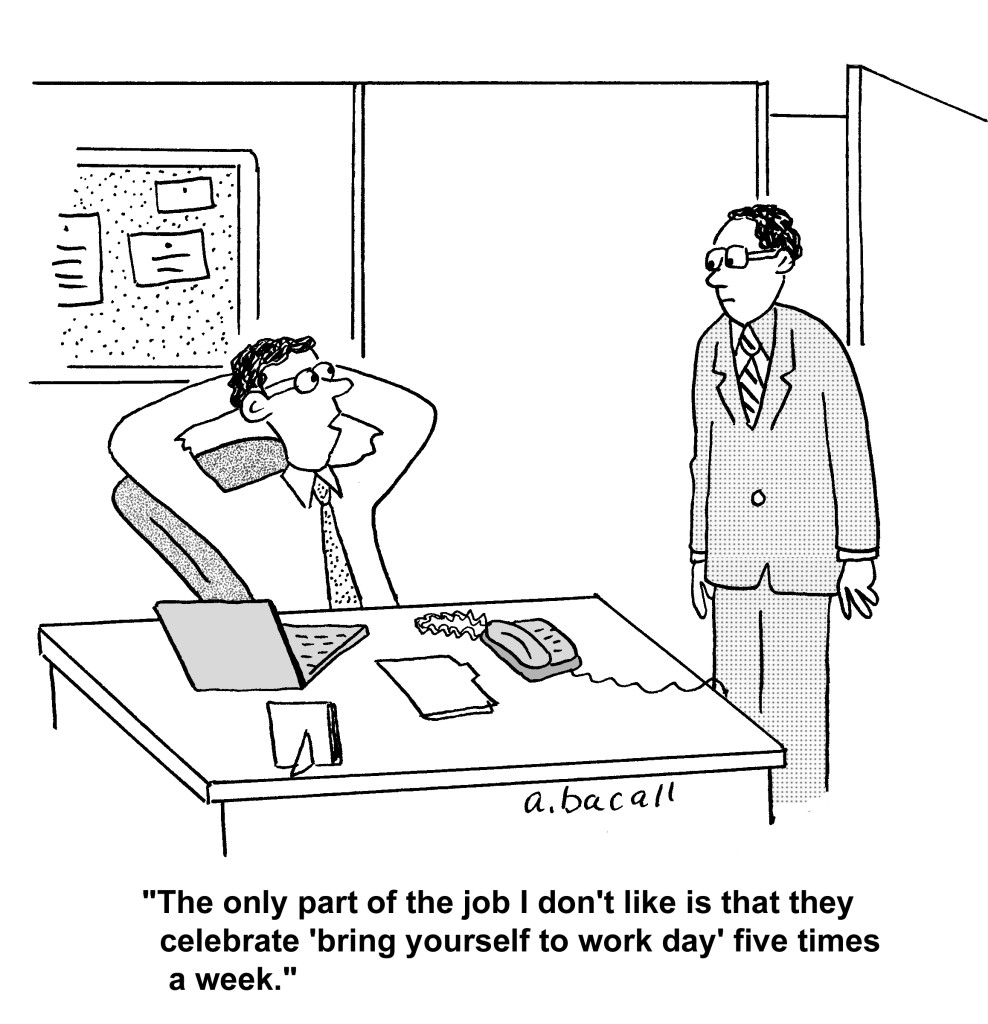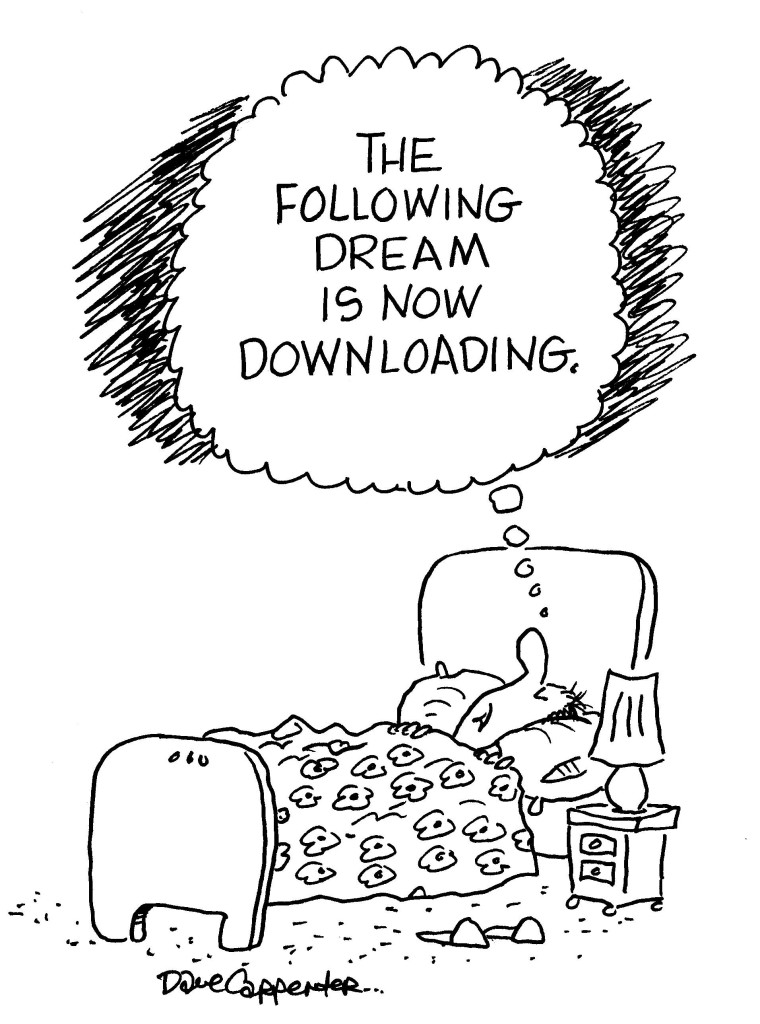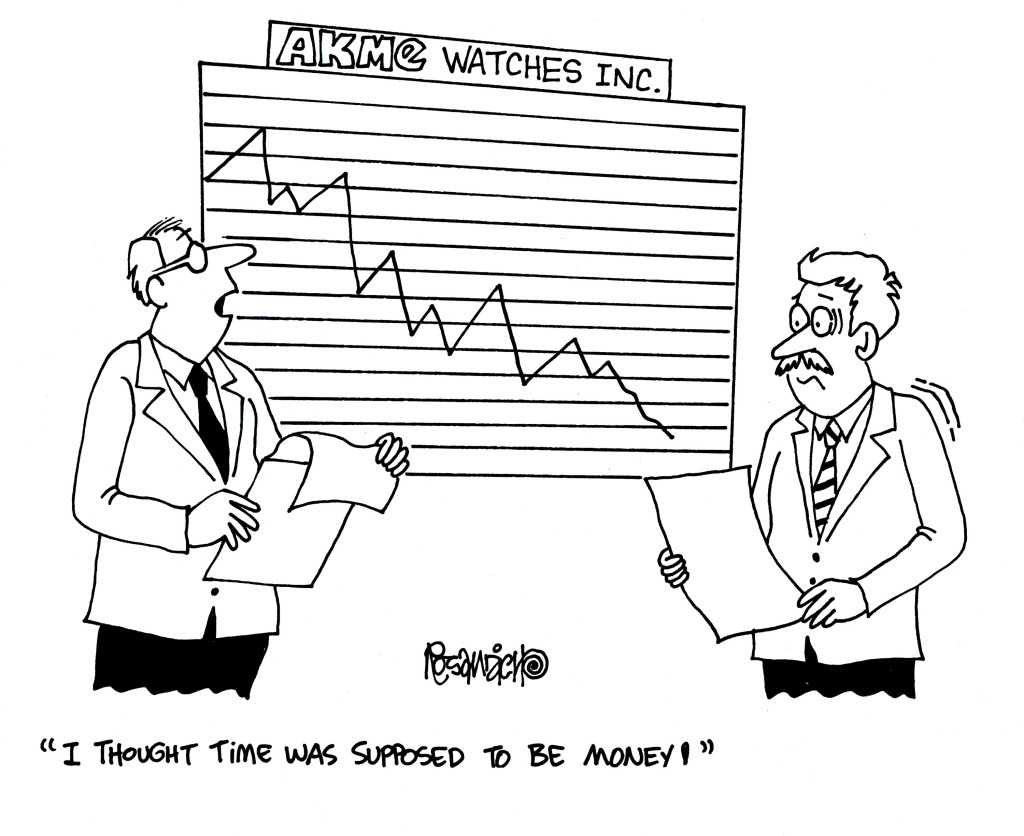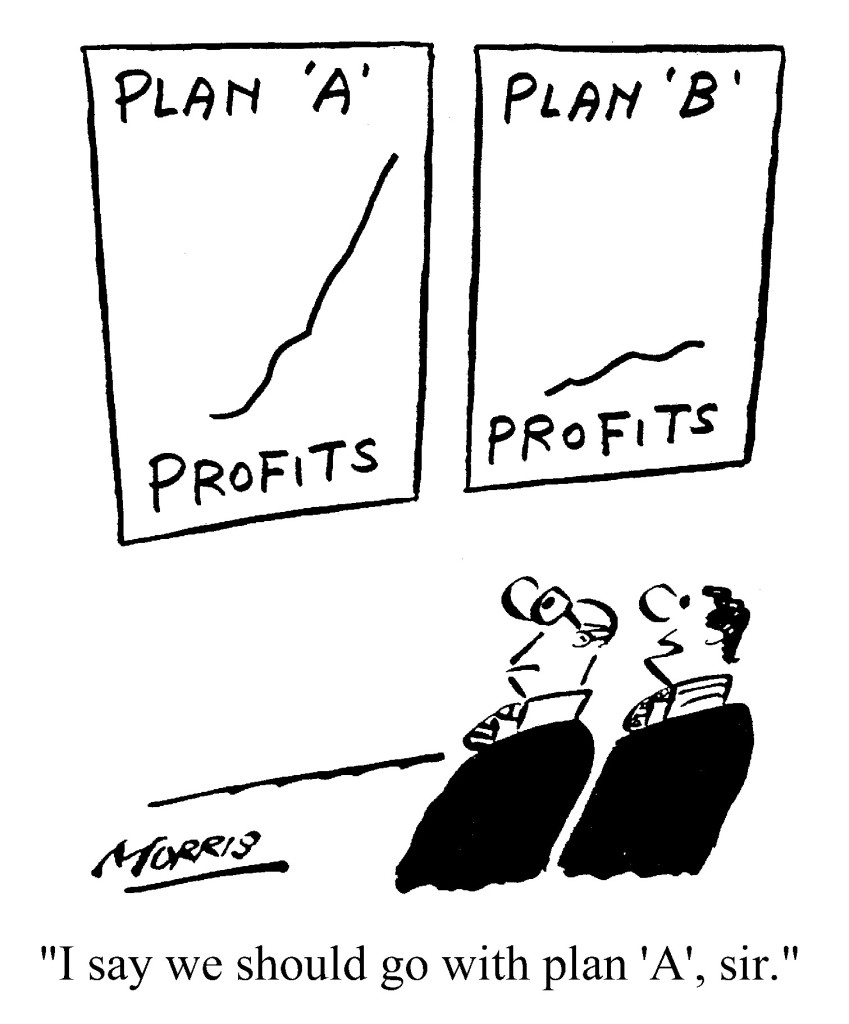I’ve failed plenty of times. Indeed, I thought I’d never make it back to freelancing after almost losing the shirt on my back about five years ago. As we all do, I tried to ‘stem’ the losses and offset freelance earnings by jumping on bandwagon after bandwagon, dreaming up fanciful ways to supplement my income from online channels. All this gave me though was a cover for procrastination. This ‘opportunity seeking’ took me away from committing to the work which really mattered and which would potentially have turned my fortunes around.
Some say treat failure as a friend which is easy for lofty billionaires, techy folk spending venture capital and ultra-successful types to say but when you’re staring down the barrel of a gun (cleverly disguised as a red letter, peering out of an envelope marked ‘payment overdue’) such statements are empty and meaningless.
Failure is no friend of mine
These days I get into the habit of mentally logging every failure (regardless how minor) for future reference, to serve as a red flag or sign-post and help guide future business (and dare I say it, life) decisions.
Even as a freelancer, you’re not exempt from that word, “business” so regardless of whether times are good or bad right now this post is for you. You should care about continually correcting your course, cataloguing prior micro mistakes, rolling up your sleeves and ultimately minimising failure potential. I’ve used these red flags to turn things around and I hope this 3,000 word (sorry) post helps you do the same.
By seeing this post through to the end you’ll get a handle on where I went wrong, how I fixed it and how you can fix any red flags you can see in the 10 controllable failpoints below. I’m 100% sure I’ll have lots more over the next 5-10 years but here’s where I’m at so far, so here we go.
1. Too much faith in the magic bullet

This is a biggie, something I encounter a lot when I speak to Freelancelift members. There was a time when I was on 27 mailing lists, probably 5 or 6 direct mailers and I’d enrol on some online wonder-programme or other almost on a monthly basis.
What I quickly realised was that even though each probably had some merit it would be physically impossible to action everything. I was chasing the magic bullet, the quick win, the 1%, the ‘never never’… resulting in getting quickly ‘nowhere nowhere‘.
How I beat it
I unsubscribed from all lists, installed a kick-ass anti spam and began my list amnesty. Anything I felt lost without, I resubscribed to and I put more emphasis on actually finding my own information, only following content creators who spoke my language.
I succeeded at only seeking expertise when I needed it rather than being force-fed generic information which only distracted me from achieving my unique vision. This enabled me to work out my own solutions with good old trial and error backed with only credible guidance.
Your own beaten path is much more reliable than an off the shelf “insert-superlative-here” whizz-bang system
How you can beat it
Commit to getting better, not consuming every hot new idea which requires a rework of the way you do things. Take yourself off the drip feed of mindless email lists, use your intuition and follow credible voices who won’t try and ram a programme down your throat at every opportunity. Then you’ll finally be able to save yourself from drowning in content you’ll never be able to action.
Some picks to rebuild after ‘list-amnesty’ – Corbett Barr & Chase Reeves at Fizzle, Justin Jackson, Bidsketch, Tom Ewer
2. Lack of self control

So this one probably applies to Liam v1.0 (incidentally I’m at around Liam v2.8 right now). Aged around 18-21 I took the “lifestyle business” to the extreme.
I woke in a daze one Tuesday morning at 11am to the conclusion that what I’d built was all lifestyle no business, I mean who wants to think accounts and forecasting after a 5 day weekend?
But I was young at that point (9-10 years ago), finding myself and some of that stuff did help the creative juices flow which took me down the perennial path I’m still meandering today.
If you’re aiming for a business which supports your lifestyle you should double down on strategy & efficiency to ensure you are able to physically “cap” your working week. When you add in a dash of self control you won’t squander the working time you’ve set forth, preventing that sinking feeling you get from not putting in the work.
How I beat it
Oddly enough things started to change for me when I actually “went to work”. Previously I always had a home office.
I hired a desk in a shared co-working environment which enabled me to divide my business/personal life in a more physical way. The nice sidenote is that in the 3 years that have followed the floorspace I now occupy (with my awesome team at Tone) in the same building has increased by a factor of 20 with 16 desks at last count.
How you can beat it
Try to channel friends with high self control & will power. We all know the guy who refuses midweek drinks, who always considers how decisions affect tomorrow and the next day or the gal who hits the gym 4 days a week no matter what. Study what makes them tick and see if you can mould it to your own personality. Then try to look beyond the ‘home-working’ thing, even as a freelancer. Co-working spaces are really cheap and they offer secondary benefits such as referral opportunities as you build up a network in the space.
3. Ambiguous goals

This is something I pound the drum about a lot. The fact of the matter is some would-be entrepreneurs go into freelance business just to make money, without clearly understanding and defining what makes for success.
“if you don’t have a map, compass or destination how do you intend to get from A to B?”
When I started out alone aged 19 I knew I needed to make enough to pay the bills. In the end I did, but as I didn’t have a clear vision for success and I stuttered into a plateau which, combined with failpoint 1 commenced a downward spiral in my fortunes.
Had I been able to track performance against realistic goals, consider my business journey evolution rather than growth I could have taken more decisive action to stop the rot.
How I beat it
For every new project or venture I undertake I’m doubly clear on what I want to get out of it. These goals are time sensitive and very specific. This helps me to be objective about progress and allows me to pat myself on the back every now and again!
How you can beat it
Your journey as a freelancer doesn’t need to be such a mammoth project, you just need to work backwards from your monetary goal and understand what that looks like in terms of customers, order value, prospects, visits, online visibility.
You also then need to be specific about what your lifestyle looks like so you can continually be auditing yourself, ensuring you’re not sacrificing living the life you want by chasing it.
4. Overcomplication, start small

One of the best moves I made when freelancing second time around was doing it part-time until I could justify enough earnings to go full-time. With an embryonic vision in hand, I set about putting together a new part-time design business. I was motivated by one vow: to try again, and do it properly this time.
Despite the still-fresh trauma of previous failure, I set about to build a venture that offered much less risk but which still had a considerable upside.
Month 1 – I earned enough to cover my time to set up the business at a reasonable hourly rate.
Month 3 – I surpassed my monthly salaried income for the first time.
Month 5 – I closed a deal that earned me three times my monthly salaried earnings. In that month I earned $9,548.
On Freelancelift I put lots of ideas out there, the key takeaway from this to start implementing these ideas in small, manageable chunks. You don’t have enough hours in the day to put everything into play immediately, so start small, test new ideas and continually evolve.
In the early days I tried everything, each time going “all in” putting my neck on the block daily. I over complicated ideas and gave up on most as a result. This is a waste of time in the long-run so I’m here to tell you to scale down the complication, start small and test it.
How I beat it
I made myself known in the freelancer marketplace, part-time at that, which enabled me to work with pretty much bare bones until I proved the concept and found my particular space.
Once the concept is proved jump in with both feet, until then don’t over invest in it.
How you can beat it
Definitely think set aside only a small amount of time for business development alongside your current activity, definitely try leveraging a remote team, definitely start small and really pin down your vision before fully committing and you’ll beat overcomplication.
5. Poor grasp of time value / leverage

This was one of the major catalysts in my recent years’ business growth. I won’t go too much into it here as I’ve got tons of extra resources on the topic of leveraging ‘Big Business Stuff’ and processes but essentially you need to understand this:
As a business owner you wear lots of hats. Doing everything yourself for ‘free’ is false economy; damaging to the well being of you and your business.
Understand that everything in your business can be mapped out into a process and you can leverage a remote team to get things done to deliver on that process. Check out the free short book Taking Back Control of your Time
How you can beat it
The penny dropped when I devised a yes/no flow (which you can follow yourself here) building a business flow to help me deliver items which didn’t immediately require my attention, but in summary you need Stop thinking like a freelancer, start thinking like a business.
Further reading: Take back control of your time
6. Sacrificing vision in face of difficulty

So here’s the thing. I’m a sucker for great branding, purposeful self-promotion and really clear, unbridled vision. But what happens when times get tough? What about when you need to cut costs, do things faster?
I found myself pawning out my brand and quality of delivery in return for quicker revenue or lower costs, running your business like this is the quickest way to end up with ‘bad apples’. Poor quality clients you don’t enjoy working with.
How I beat it
It’s a real tough one and I’m not sure I fully have but at least I’m aware of it when it rears its head. The one benefit I have though is ability in every area of my business interests. That is to say if everybody who worked at the businesses disappeared I could probably manage, even stripping it right back to me and my laptop.
I’m very aware this flies in the face of the distributed workforce and lifestyle business but I guess the learning point for me on this one was to always have a plan B and to know enough about what you’re doing to be able to survive.
How you could beat it
In some of my content I talk about “devise the what, outsource the how” that is to say you make the big calls, devise the processes and have an arms length understanding of every point of your business but your team deliver on that vision.
If you make your team members accountable for documenting their work too you’ll be in a much better place to safeguard against disasters.
7. Lack of software availability

I used to spend 15+ hours per week on activities such as:
- managing accounts
- calculating payroll
- emailing “nearly clients”
- sharing files by snail mailing CDs / USB (yes, really)
This is something that couldn’t really have been avoided at the time as most didn’t exist beyond the realms of $10k / month enterprise software but current technology allows huge timesavings by really getting good at software.
How I beat it:
Almost all of the above is automated and second nature now, last year I was invited to share our software stack on Under30CEO – what’s interesting is that this software is almost all free.
You should leverage as much as you can to ensure you can take advantage of the closing gap between Enterprise level software and ‘off the shelf’ cloud platforms.
8. All optimism no realism

Part of the entrepreneur’s makeup is ambition and optimism. On the surface the two are the same but in the past I’ve been guilty of allowing my ambitious streak to out-run realism, when it comes to decision-making.
That is to say I’m using my ultimate goals, my vision and ambition as a guide instead of cross-referencing with straight-up objective realism, potentially quite dangerous.
How I beat it
I now put together a ‘what if’ analysis for each major decision. For minor (mainly financial ones) I do a quick cashflow forecast to find out worst case scenarios. These aren’t huge exercises, I’ve just developed a few simple questions to get to the core worst case scenario but the point here is to understand the wide spectrum of consequences for every major decision to protect you from any potential failure.
How you can beat it
You’re probably doing this already but at the least, take no decision lightly – you should be able to make each decision with a couple of questions:
- Is this purchase/hire/contract/etc a contribution to my roadmap or a distraction?
- What is the worst case scenario of making that choice
By using the steps above you’ll be much more informed and be less reliant on your ambition or instinct.
Further reading: Building a vision for your freelance business
9. Not being proud of it

As I’ve said above I’ve tried lots of business models. Some okay, some really spammy I’m not proud to say. From flipping domains to electronics dropshipping, from running affiliate sites to margin stock trading. You name an Internet lifestyle ‘trend’ I’ve probably tried it.
The traits the above have in common is that they were each:
- pretty darn ugly
- a failure ultimately
They all existed as a plot to make quick money, nothing more. I wasn’t proud of them. I soon realised that the key to making business work is to be proud of everything you put your name to, and to use value as your shining beacon. This was one of the reasons I advocate ditching freelancer exchanges like Elance as quickly as possible, you’ll not make work you’re proud of with clients from those platforms.
Yes its longer term but if you’re proud of what you have achieved and can be sure you’re providing value to a specific sector as a freelancer you’re on the right track.
How I beat it
Well, I was a creative at heart and knew what looked good so I pretty much self-taught Photoshop and started to take control of the branding of any new business ventures.
I also found that sharing what I was working on via my own immediate social circle (think close friends & family) forced me to check and double check what I was putting my name to.
How you can beat it
If you aren’t a creative, find a good creative minded partner or freelancer to team up with. If you can provide the detailed vision, direction and product/service you can work together to package that up into something you can be proud of.
10. Not finding my own voice

This is a pretty recent one and in some way goes back to the point on chasing the magic bullet as it relates to being ‘known in your space’. I wrote a short book “Why nobody knows your name” to outline how to grow your online reputation, in it I recall that in the early days I was mimicking other bloggers and web entrepreneurs rather than finding my own voice and personality.
I pretty much hid all reference to my age, my background, my face and everything that would allow the visitor on the other side of the screen to connect. The result was lots of copycatting, no fixed idea of my market, no engagement and pretty much no impact.
Your personality should come through in everything you put your name to and you should be able to provide strong points of view that reflect your own personal experience and outlook. Combine that voice with great content in a specialist area and you’re on to a winner.
Further reading: How to amplify your online voice
How I beat it
I guess this came with time and experience. As I was able to (over time) develop my own experiences rather than channeling someone else’s I became more confident in what I was saying and a little more relaxed in my approach.
How you can beat it
You can begin to look at which styles of content / presenting feel natural to you. Is it long, deep, data-filled posts? Is it short opinion pieces? Are you more curator and do you provide more value that way? Are you better talking via a screencast? Or on video in front of a whiteboard?
Try stuff, see which firstly feels right, then once you’re in a comfortable place see what resonates best with your audience.
At that intersection you’ll find your voice.
Summary
So by following the steps above you’ll be able to counter-punch any hint of failure, allowing you to carve your own path and learn from my steps to catalogue your own micro mistakes enabling you to be more productive, earn more and ultimately succeed as a freelancer (or as any online business really).
There are a ton more of course, experience which just comes from ‘time in the game’ and general experience which are more difficult to put down in black and white, but as I am in the final stages of my book charting the growth of my tiny freelance business to $1m (out November 17th) I wanted to reflect a little. Check out what’s inside and get your name down for a free copy.
I am not perfect and I have a lot more failures to endure on this path I’m sure, I’ve just mustered the endeavour and commitment to keep going, learning as I overcome each obstacle. I’ve not yet reached the end and as the old Churchill quote goes:
“Success is not final, failure is not fatal: it is the courage to continue that counts.”
Winston Churchill
Learn anything? Please share
When you’re held ransom by client work and income instability how are you supposed to find time to work on “growth” (whatever that means).
- Make freelancing more stable
- Repel 'bad apple' clients
- Beat "treading water" cycles
- Multiply online exposure
Exclusively on Amazon






